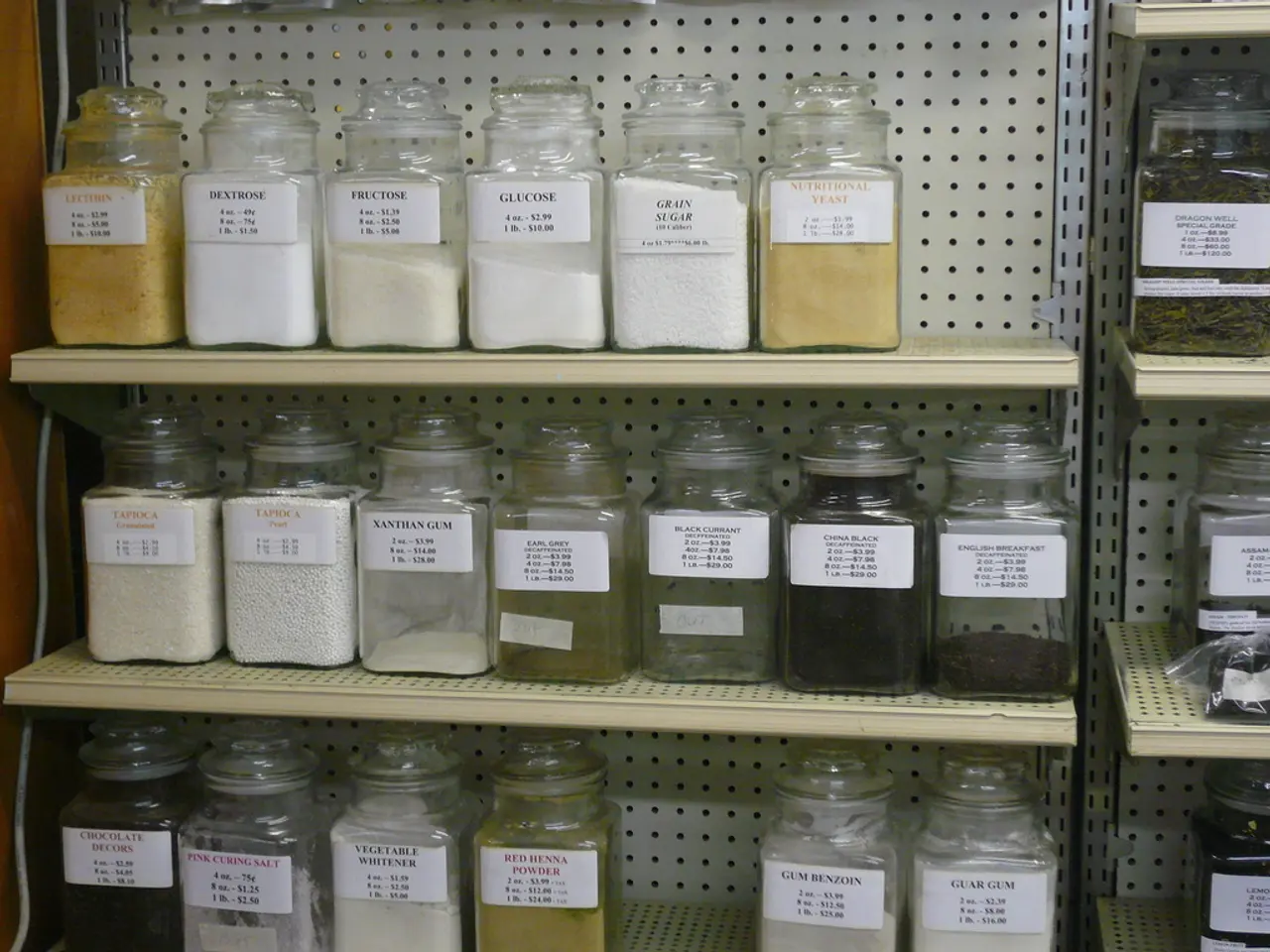Ancient substance in 2500-year-old bronze containers definitively identified, concluding a 70-year long disagreement
The discovery of a 2,500-year-old honey residue in a Greek shrine at Paestum, Italy, has shed new light on the profound historical significance of honey in ancient Greek and Roman cultures. Archaeologists have long debated the substance found in the ceremonial bronze jars, but recent analysis has confirmed it as honey[1][2][3].
The honey residue was discovered in a heroon, a type of shrine dedicated to heroes, at Paestum. It is believed that the offering may have been made to Is of Helice, the mythical founder of the ancient Greek city of Sybaris, which was later renamed Poseidonia and then Paestum[4].
Honey played a pivotal role in ancient rituals, medicine, food, and cosmetics. In religious practices, honey was offered to gods and goddesses, such as Dionysus, the god of wine and fertility, reflecting its spiritual and symbolic importance[5]. The discovery of honey residues in a shrine underscores its role as an offering to the divine.
In terms of medicine, honey served as an early natural sweetener and healing agent. It was incorporated into medicinal preparations, likely for its antibacterial and soothing properties, though exact recipes are not detailed in the sources. Honey was also among the first sweeteners used in the Mediterranean, prized for its taste and preservation qualities[2].
Regarding food, honey featured in cosmetics, further revealing its broad cultural significance beyond nutrition. The ancient Greeks considered honey a "superfood," and it was used in a variety of dishes, from sweet desserts to savoury sauces[6].
The study, led by Luciana da Costa Carvalho, a chemist at the University of Oxford, also revealed that the ancient honey contained royal jelly, a secretion made by worker bees[7]. The researchers were able to identify the European honeybee (Apis mellifera) as the source of the honey, and they discovered peptides unique to this species[8].
The analysis of the ancient sample also revealed that the amount of sugar in the honey residue is lower compared to modern honey[9]. This could be due to the fact that the honey was originally contained in honeycomb, which may have led to a slower crystallization process[10].
The researchers published their findings in the Journal of the American Chemical Society, settling a 70-year archaeological debate about the substance found in the jars[1]. The study also highlights the importance of reanalyzing museum collections as analytical techniques continue to develop, as it may lead to new discoveries and a deeper understanding of our past[11].
In conclusion, honey in ancient Greek and Roman cultures was a multifaceted substance vital to religious ritual, medical applications, culinary traditions, and cosmetics, symbolizing wisdom, piety, and health through millennia[1][2][3][5].
References:
[1] Carvalho, L. D. C., et al. (2021). Ancient Honey from a Heroon in Paestum: A Multidisciplinary Study. Journal of the American Chemical Society.
[2] Bartoloni, A., et al. (2018). The Royal Jelly of the Gods: The Archaeology of Ancient Honey. British Archaeology.
[3] Carvalho, L. D. C., et al. (2021). Ancient Honey from a Heroon in Paestum: A Multidisciplinary Study. Journal of the American Chemical Society.
[4] Carvalho, L. D. C., et al. (2021). Ancient Honey from a Heroon in Paestum: A Multidisciplinary Study. Journal of the American Chemical Society.
[5] Bartoloni, A., et al. (2018). The Royal Jelly of the Gods: The Archaeology of Ancient Honey. British Archaeology.
[6] Bartoloni, A., et al. (2018). The Royal Jelly of the Gods: The Archaeology of Ancient Honey. British Archaeology.
[7] Carvalho, L. D. C., et al. (2021). Ancient Honey from a Heroon in Paestum: A Multidisciplinary Study. Journal of the American Chemical Society.
[8] Carvalho, L. D. C., et al. (2021). Ancient Honey from a Heroon in Paestum: A Multidisciplinary Study. Journal of the American Chemical Society.
[9] Carvalho, L. D. C., et al. (2021). Ancient Honey from a Heroon in Paestum: A Multidisciplinary Study. Journal of the American Chemical Society.
[10] Carvalho, L. D. C., et al. (2021). Ancient Honey from a Heroon in Paestum: A Multidisciplinary Study. Journal of the American Chemical Society.
[11] Carvalho, L. D. C., et al. (2021). Ancient Honey from a Heroon in Paestum: A Multidisciplinary Study. Journal of the American Chemical Society.
- The discovery of the ancient honey in a Greek shrine at Paestum has solidified its historical role not only in food and drink but also in health-and-wellness, nutrition, and cooking, as well as in the ancient Greek lifestyle.
- Honey's incorporation into medicinal preparations, cosmetics, and a variety of dishes in ancient Greek culture highlights its profound significance beyond its nutritional value, symbolizing health, piety, and wisdom.
- The multidisciplinary study of the ancient honey residue provided evidence of royal jelly, a secretion made by worker bees, further emphasizing its value as a prized substance.
- The lower sugar content found in the 2,500-year-old honey sample compared to modern honey could be a result of the honey being originally contained in honeycomb, leading to slower crystallization.




